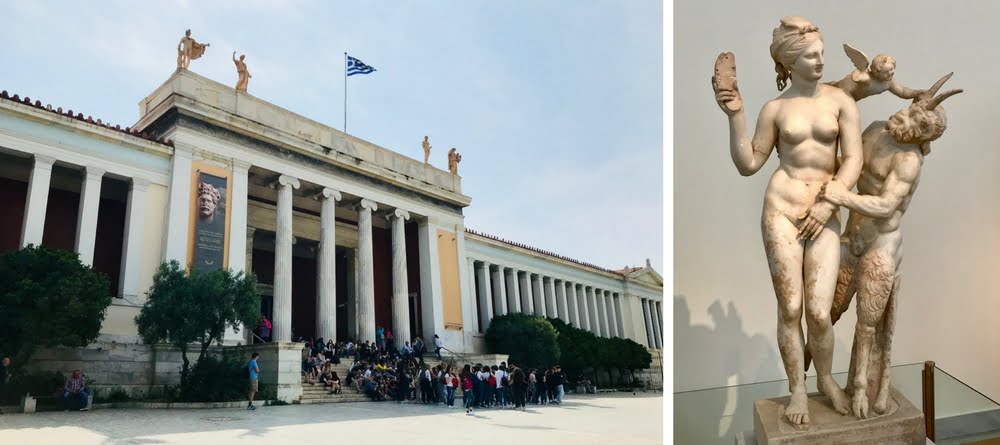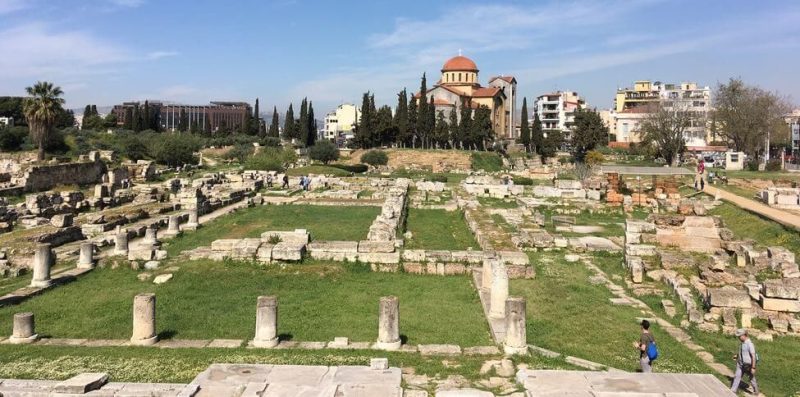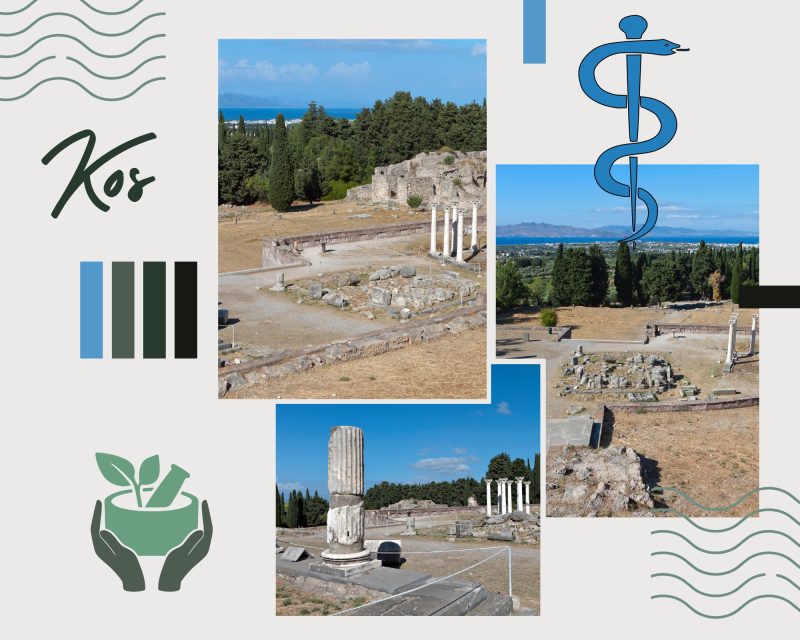The National Archaeological Museum is undoubtedly one of the finest museums in Athens. Above all, don’t let the size (8,000m²) or the name of the museum fool you. The word ” archaeological ” can be off-putting… and yet, even if you’re not a history or archaeology buff, you’ll fall under its spell. We speak from experience, having taken friends there who were dragging their feet a little and were afraid of a tedious visit to a museum displaying Greek antiquities. In fact, they were dazzled by the beauty of the works on display, some of which are visually very impressive. So much so, that they even wanted to return with a guide on their second visit to Athens a few months later. As for history buffs, they’ll also be in for a treat, needless to say!
In short, trust us, this is an impressive and fascinating museum. In fact, it’s one of the must-sees on any trip to Athens. And if you don’t have much time, we’ve selected the exhibits you don’t want to miss.
What’s inside the Athens Archaeological Museum?
The National Archaeological Museum is a huge 8,000m² building housing the world’s finest collection of Greek antiquities. On display are remarkably well-preserved sculptures (some of them monumental), jewelry, pottery, frescoes and works in solid gold. There are some real treasures to be found here.
Some works are very old (17th century BC) and yet most of them are well preserved. Some even look strangely contemporary. Contrary to what one might imagine, these antiques are particularly “alive”. Some of the statues are more lifelike than others, and you sometimes get the impression that the characters are about to come to life or start talking.
The museum also hosts high-quality temporary exhibitions.
Practical informations
For whom?
Quite simply, for everyone! History buffs and non-history buffs alike… there’s so much to see, there’s something for everyone. As for the children, they generally really enjoy this place, which is an excellent way of introducing them to Greek mythology (here again, we speak from experience, as this museum has enchanted our children, who are asking us to return during the next school vacations). And teenagers will discover the works studied in their history books “for real”.
Where is the National Museum of Archaeology in Athens?
The National Archaeological Museum of Athens is a little off the beaten track from the Greek capital’s tourist center. It is located in the Omonia district, at 28is Oktovriou 44, here on Google Maps.
You can reach it by Metro from the Omonia (line 1 green – line 2 red) or Victoria (line 1) stop, and then walk to the museum in about ten minutes. Alternatively, take the city bus or the tourist bus, which drops you off right in front of the museum.
Athens Archaeological Museum opening hours
| SUMMER – April 1 to October 31 | WINTER – November 1 to March 31 |
|---|---|
| Tuesday: 1pm-8pm | Tuesday: 1pm-8pm |
| Wednesday to Monday: 8am – 8pm | Wednesday to Monday: 8:30 a.m. – 3:30 p.m. |
Opening times change regularly, so check the official museum website the day before your visit.
We also recommend that you arrive either when the museum opens or at the end of the day, to avoid the crowds.
Please note that the National Museum of Archaeology is closed on certain days: December 25 and 26, January 1, March 25, Orthodox Easter Sunday and May 1. Easter opening hours are modified: Good Friday 12pm-5pm, Holy Saturday 8.30am-3.30pm.
Museum prices
| Full price | 12€ | |
| Reduced rate for European citizens over 65 (from 01/10 to 31/05) | 6€ |
Admission is free for European citizens up to the age of 25, children up to the age of 18 from non-European Union countries, and for persons with disabilities and one escort (only in the case of 67% disability) on presentation of proof.
Free admission for all visitors: March 6, April 18, May 18, the last weekend in September, October 28, and the first and third Sunday of the month between November 1 and March 31.
Good to know: Disabled visitors can access the museum either via the ramp at the main entrance, or directly from the sidewalk on Vasileos Irakliou Street. Wheelchairs are available at the museum’s information desk, and disabled WCs are available in the basement (accessible by elevator). Visually impaired visitors can request a list of 20 pieces from the sculpture collection at the Museum Information Desk.
Buy admission tickets
You can buy your tickets either :
- On site, at the ticket office at the entrance of the archaeological museum
- On the official Hellenic Heritage E-Ticket website: Tickets cannot be changed or exchanged. For reduced-rate or free tickets, you must go to the museum ticket office.
- A simpler solution is to buy your full-price ticket with or without an audioguide on the Get Your Guide website: Full-price ticket with or without audioguide in English. We haven’t tested the audioguides, but the reviews are pretty good. Make sure you choose a package with the museum audioguide and not the Athens audioguide.
- Disadvantage for the online solutions: no reduced rates available on the websites. But the audioguide is a real plus if you don’t want to waste too much time in this enormous museum.
- You can also buy an entry ticket only for the National Archaeological Museum:
How to visit? Self-guided or guided tours
For self-guided tours, we recommend you first visit the rooms opposite the entrance (rooms 4, 21 and 34), then go up to the second floor, and finally return to the entrance and take a circular tour of the rooms.
For more information, ask for an audioguide at the museum entrance.
Guided tours : To fully appreciate the visit and understand the works on display, the best way is to take a guided tour. We’ve seen but not tested this english-speaking guide with very good reviews: Christos. He is very knowledgeable and passionate, with a good sense of humor.
How long does the visit last?
It all depends on your tastes and desires. On average, it takes between two and four hours. Enthusiasts can easily spend a whole day here, as the museum is vast (over 12,000 exhibits). But if you’re not a fan of museum visits, don’t worry: it’s possible to stay for less time and select only the major works. In short, it’s a bit like the Louvre: you can choose to see everything, or just the Mona Lisa.
The cafe at the Athens Archaeological Museum
Don’t leave the museum without a visit to the cafe in the pretty inner courtyard. A staircase leads from the museum entrance down to the basement (accessible even without paying museum admission). Or through Room 17, where stairs lead down to the courtyard.
This cool outdoor courtyard is planted with trees. Here again, beautiful works are on display. But above all, this café is a very pleasant place to take a cool, quiet break. The atmosphere is soothing. It’s the ideal place to end a tour or take a break in between.
Our selection of must-see works
Agamemnon’s mask
The Mask of Agamemnon is located in room 4, opposite the museum entrance. It dates from the 16th century BC and is incredibly well preserved. It may not be the mask of the legendary Trojan warrior… but it’s superb nonetheless. All in gold, it features details of rare finesse. An object unique in Greek antiquity.
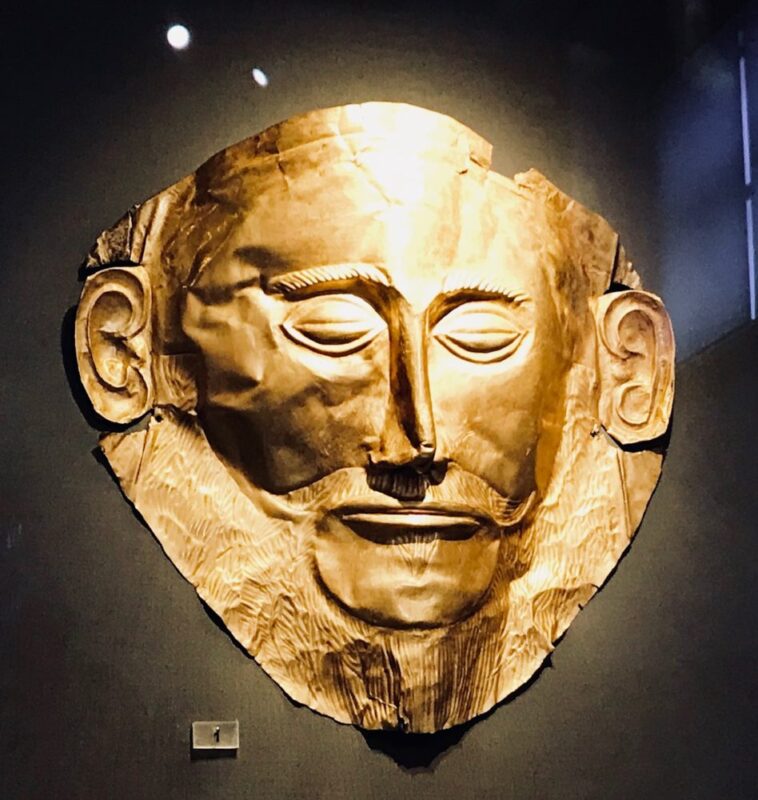
The Artemision jockey
Room 21 features an imposing bronze statue of a horse and a very young rider. The child looks very small on his mount. This statue was found in a sunken wreck off the Cape of Artemisia in the 1st century BC. It’s a true masterpiece: the boy’s expression is very realistic, you can feel him concentrating and exerting himself. The movement of the galloping animal, its veins bulging, is also perfectly captured.
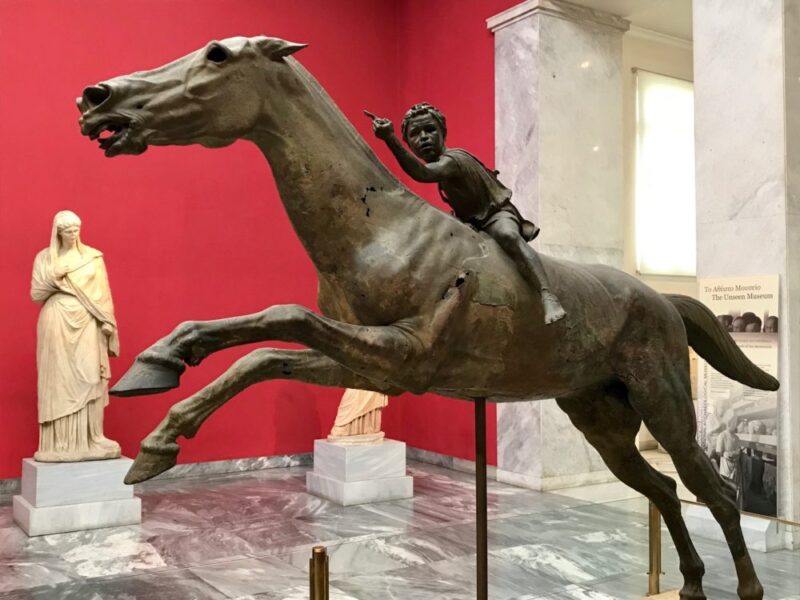
The Akrotiri frescoes
On the second floor, at the far end of Room 48, you’ll find three spectacular frescoes. They date back to the 17th century B.C. and were found on Santorini, on the site of Akrotiri. One depicts two boxers, the second antelopes, and finally the third fresco symbolizes spring.
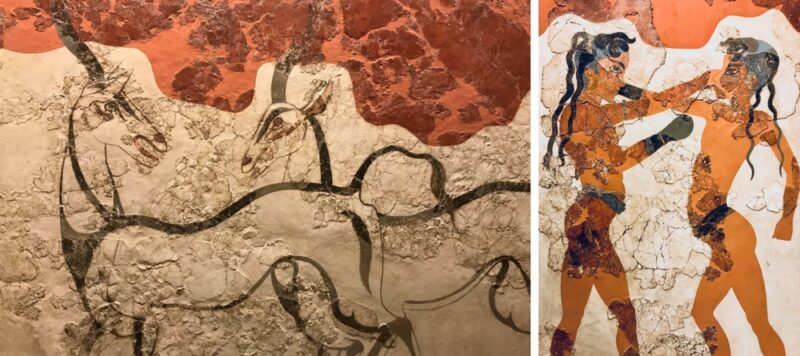
The colossal Kouros of Sounion
On display in Room 8, this male statue dating from 600 BC is impressive. It once stood in front of the temple of Poseidon in Sounion. Admire the size of the colossus, his deliberate gait with his foot forward. It makes you feel so small…
The bronze Poseidon
Room 15 features an imposing bronze statue dating from 460 BC, depicting Poseidon, arms outstretched and brandishing his trident (some claim it’s actually Zeus, but the debate remains open). This is undoubtedly one of the museum’s highlights. Admire the representation of movement, the muscularity of the God, his severe face from which emanates a feeling of power and domination. Majestic!
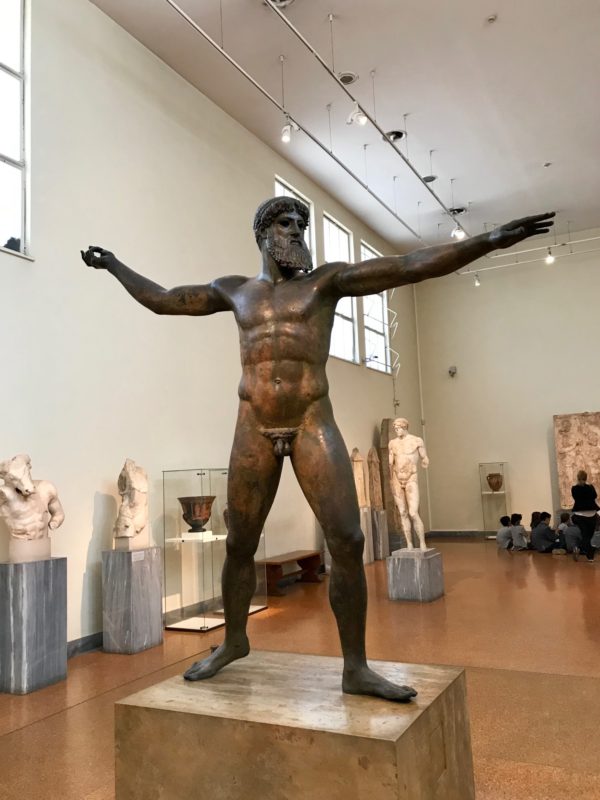
The Antikythera Mechanism
In Room 38, you can also see part of the Antikythera mechanism or machine. Found in the wreckage of a ship in 1901, this incomplete bronze astrolabe fascinates and intrigues many researchers. It is believed to be the oldest geared astronomical calculator!
Enjoy your visit!
Contact the National Archaeological Museum of Athens: Phone +30 213 214 4800 / Mail: eam@culture.gr / Website
Laure M.
